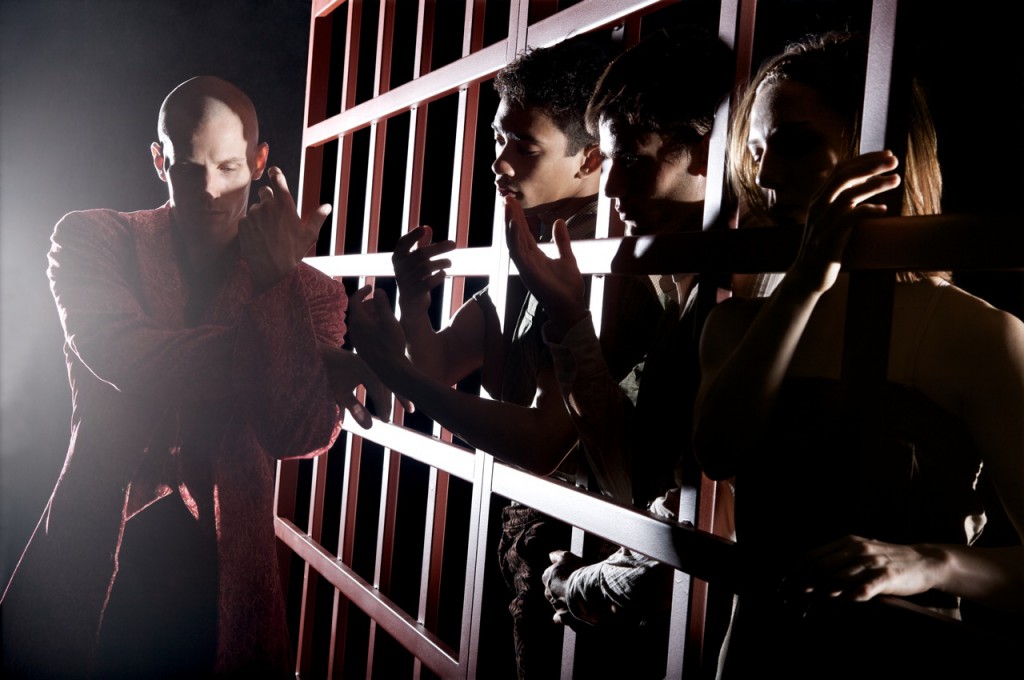Your cart is currently empty!
DANCING WITH A STAR

Two days before the Cedar Lake Contemporary Ballet performs, I am opposite Artistic Director Benoit-Swan Pouffer at l’Agora, cité internationale de la danse in the charming French city of Montpellier. We are sitting in a corner of the courtyard on a warm July afternoon, and Pouffer is visibly amped that his company is touring in Europe. The renovated 14th-century monastery is the headquarters for the 2012 Montpellier Danse festival, and its five studios and outdoor amphitheatre serve as venues for many of its performances.
Pouffer, who’s been dancing since age 6, is Parisian, but he has spent equal time (18 years) in New York. After studying at the Conservatoire National Supérieur de Musique et de Danse, he moved to the Big Apple to follow his dream of joining Alvin Ailey American Dance Theater, where he remained for seven years.
“It went so fast,” Pouffer says. “From Ailey, I took one day off and went to Cedar Lake as a resident choreographer. I stayed there for nine months. That was my first time to figure out what was a resident choreographer. Within those nine months, I was the artistic director. I was 30 years old. I just feel like it’s something you do, and have your head down and just go.” He pauses, then adds, “Was it overwhelming? Of course. I had to find an identity. I had to give them a reason of being who we are, what we have to put on the table. The first few years were rough but exciting. I had a chance to create a new company.”
When Pouffer, 36, became artistic director of Cedar Lake in 2005, it was as if the whole world was against him. Yet he shows compassion when speaking about his detractors. “You’ve been dancing, you have a company for 20 years in New York, you’re struggling, and there’s a kid who is 30 years old with two buildings and a company. How would you feel?” he asks. “At first, I was defensive. Now I understand; it’s hard to have a company, to ask favors, to run around and get money.” Cedar Lake is extremely fortunate. In 2003, Wal-Mart heiress Nancy Laurie founded the company and she continues to subsidize its creation of art. “I am very blessed. I don’t have to fundraise,” Pouffer says. “I have this person who truly believes in dance. She thinks it’s an art that’s so precious that she’s willing to spend the money on it. I got the lottery ticket in dance.”
This artistic arrangement in the dance world is rare, especially in America. Pouffer has worked hard to knock the words “vanity project” from the lips of critics. “Everything happens for a reason,” he says. “I was meant to do this. I was at the right time at the right place.”
His confidence is convincing. He might look like one of his dancers (or a model), but his clarity of purpose and overarching vision are those of a leader. His checklist for an artistic director: “Know what you stand for—what you like and don’t like; be definite; have a voice.” Pouffer is very clear about what he wants, including diversity in dancers—shape, height, origin. When he auditions new talent, he looks for people who don’t look like anybody else in his company.
“It’s not just dance, but what you have in here,” Pouffer says, tapping on his heart. His dancers must possess strong ballet technique but also able to let go of the ballet and be a blank canvas. “My type of dancer is strong technically but understands that true technique is control of the body; how you actually control the tool—your body,” he continues.
To be a part of Cedar Lake is to be a bit of a dreamer. Anything goes. Even rehearsal time is larger than life. When Pouffer performed with Alvin Ailey, dancers would meet a choreographer for three weeks, be on stage the fourth and on tour the fifth. “It was a fast turnaround,” he says. “I never felt a connection with the choreographer. You don’t get to know anybody in three weeks. My goal with Cedar Lake is to do the opposite.” Cedar Lake allows choreographers three months. They can experiment and even start over from scratch. Time is precious for a choreographer, and Pouffer credits the three-month creative process as a key to his company’s success.
While not breathing down their necks, Pouffer lends a soft hand to the string of guest choreographers who create Cedar Lake’s repertoire. Sometimes artists have doubts. He’s there either to reassure them or guide them in another direction. Pouffer is also a great source of inspiration for his dancers. He’s closer in age to his dancers than many artistic directors elsewhere, which makes him one of the gang. One dancer in the company is only two years his junior. “I am from the same generation,” Pouffer says. “I am not removed. I missed that as a dancer— to have a connection with the artistic director.”
In the future, Pouffer would like to branch out into more commercial ventures, like choreographing Vegas shows and Broadway musicals. The hip, handsome director probably had no trouble connecting with Emily Blunt on the movie set of The Adjustment Bureau in 2010. Blunt’s character was a Cedar Lake dancer and performed several pieces Pouffer choreographed. “[Working on the film,] gave me a bit of a bug,” Pouffer says. “Creating work for the camera is a different way of seeing the work. I shape the way I want you to see my work.”
Cedar Lake will perform May 7-12, 2013, at the Joyce Theater in New York. For more information, visit cedarlakedance.com.